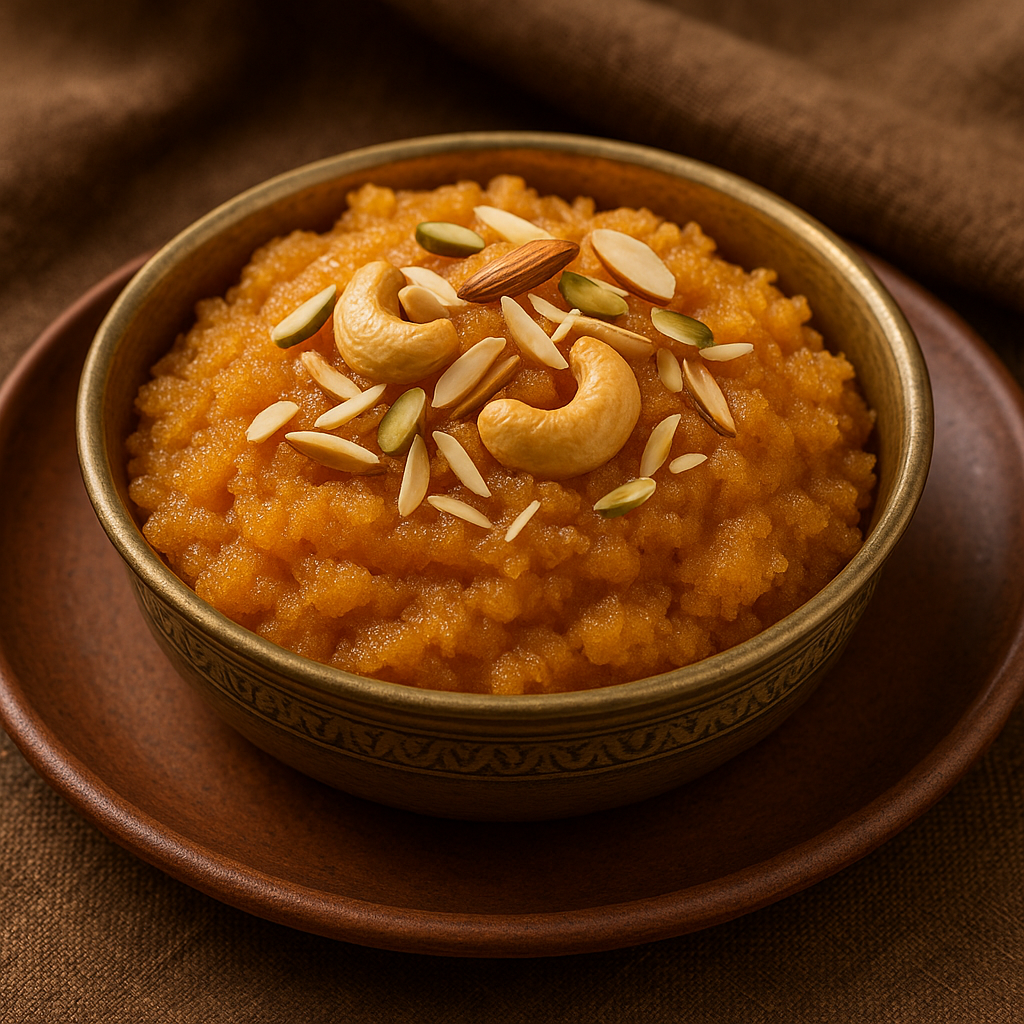
Amazing Sooji Halwa: A Classic Indian Dessert Delight
Sooji Halwa, also known as Sheera in the western parts of India or Rava Kesari in the south, is a beloved traditional Indian dessert that has stood the test of time. With its rich aroma, warm color, and melt-in-the-mouth texture, Sooji Halwa is more than just a sweet treat—it’s a symbol of celebration, comfort, and cultural richness.
A Glimpse Into Tradition
Sooji Halwa is often prepared during religious ceremonies, festive occasions like Navratri, Diwali, or Ganesh Chaturthi, and even as a prasad (offering) in temples. Its simplicity, ease of preparation, and luxurious taste make it a favorite in Indian households. Every spoonful carries with it a sense of nostalgia, often taking one back to childhood memories of special Sunday breakfasts or temple visits.
Ingredients That Make Magic
At the heart of Sooji Halwa is semolina (called “sooji” or “rava”), a coarse wheat flour that is toasted to bring out its nutty flavor. Ghee (clarified butter), sugar, water or milk, and a pinch of cardamom are the base ingredients. What elevates the dish further is the generous use of dry fruits like cashews, raisins, almonds, and pistachios that add texture and richness.
Basic Ingredients:
- 1 cup sooji (semolina)
- ¾ to 1 cup sugar (as per taste)
- 2½ cups water or milk (or a combination)
- ½ cup ghee
- ½ teaspoon cardamom powder
- A handful of cashews, raisins, and sliced almonds
Step-by-Step Preparation
- Roasting the Sooji:
Begin by heating ghee in a heavy-bottomed pan. Add semolina and roast it on a medium flame, stirring continuously to prevent burning. This step is crucial—it brings out the flavor and ensures the halwa doesn’t turn lumpy later. Roast until the sooji turns light golden and emits a pleasant aroma. - Preparing the Sugar Syrup:
In a separate pan, heat water (or milk) and dissolve the sugar in it. Add cardamom powder for fragrance and warmth. Some also add saffron strands or a pinch of turmeric for a lovely yellow hue. - Combining and Cooking:
Slowly pour the hot syrup into the roasted sooji, stirring constantly. Be cautious, as the mixture will sizzle and splatter. Keep stirring until the liquid is absorbed and the halwa starts to thicken. Add roasted dry fruits at this stage and cook for a few more minutes until it reaches the desired consistency. - Serving:
Sooji Halwa is best served warm, garnished with extra nuts or a few saffron strands. It pairs beautifully with poori (deep-fried Indian bread) and can also be enjoyed as a standalone dessert.
Variations and Modern Twists
Though traditional Sooji Halwa is timeless, modern chefs and home cooks have experimented with flavors to suit different palates. Some popular variations include:
- Pineapple Halwa: Adding pineapple chunks and juice gives a fruity twist.
- Coconut Sooji Halwa: Grated coconut enhances the richness and adds a tropical note.
- Chocolate Sooji Halwa: A kid-friendly twist with cocoa or chocolate syrup.
- Kesari Bath: A South Indian version that includes orange food color and more ghee.
A Sweet Conclusion
Sooji Halwa’s enduring appeal lies in its versatility and comfort factor. Whether served during a festival or cooked spontaneously to satisfy a sweet craving, this dessert never disappoints. The ingredients are humble, the process is straightforward, yet the final dish is pure indulgence.
For anyone looking to explore the depths of Indian desserts, Sooji Halwa is the perfect starting point—a dish that is as simple as it is sensational. Try it once, and it’s sure to find a permanent spot in your list of go-to sweets.
